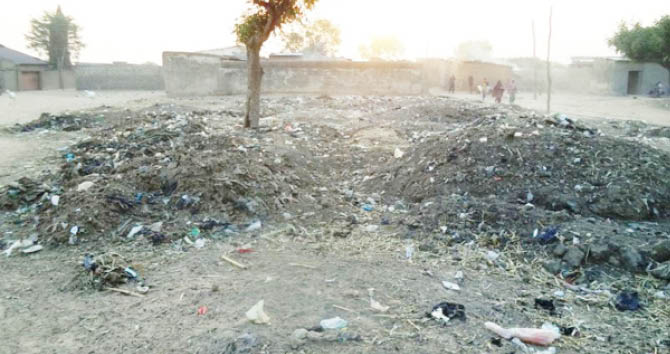AGRO SOLUTIONS: In the US, manure is ‘hot commodity’ amid commercial fertilizer shortage
For nearly two decades, Abe Sandquist has used every marketing tool he can think of to sell the back end of a cow. Poop, after all, needs to go somewhere. The Midwestern entrepreneur has worked hard to woo farmers on its benefits for their crops. Now, facing a global shortage of commercial fertilizers made worse […]

For nearly two decades, Abe Sandquist has used every marketing tool he can think of to sell the back end of a cow. Poop, after all, needs to go somewhere. The Midwestern entrepreneur has worked hard to woo farmers on its benefits for their crops.
Now, facing a global shortage of commercial fertilizers made worse by Russia’s invasion of Ukraine, more U.S. growers are knocking on his door. Sandquist says they’re clamouring to get their hands on something Old MacDonald would swear by: old-fashioned animal manure.
“I wish we had more to sell,” said Sandquist, founder of Natural Fertilizer Services Inc, a nutrient management firm based in the U.S. state of Iowa. “But there’s not enough to meet the demand.”
Some livestock and dairy farmers, including those who previously paid to have their animals’ waste removed, have found a fertile side business selling it to grain growers. Equipment firms that make manure spreading equipment known as “honeywagons” are also benefiting.
Not only are more U.S. farmers hunting manure supplies for this spring planting season, some cattle feeders that sell waste are sold out through the end of the year, according to industry consultant Allen Kampschnieder.
“Manure is absolutely a hot commodity,” said Kampschnieder, who works for Nebraska-based Nutrient Advisors. “We’ve got waiting lists.”
Sky-high prices for industrial fertilizer are projected to reduce American farmers’ corn and wheat plantings this spring, according to U.S. government data. That further threatens global food supplies as domestic wheat inventories are the lowest in 14 years, and the Russia-Ukraine war is disrupting grain shipments from those key suppliers.
While manure can replace some of the nutrient shortfall, it’s no panacea, agriculture specialists say. There’s not enough supply to swap out all the commercial fertilizer used in the United States. Transporting it is expensive. And prices for animal waste, too, are rising on strong demand.
It’s also highly regulated by state and federal authorities, in part due to concerns about impacts on water systems.
Manure can cause serious problems if it contaminates nearby streams, lakes and groundwater, said Chris Jones, a research engineer and water quality expert at the University of Iowa.
Livestock farmers say it’s a heavy lift to meet all the government rules and track how manure is applied.
RACE FOR WASTE
Regardless of the drawbacks, demand is booming.
In Wisconsin, three dairy farmers told Reuters they turned down requests to buy their manure sent via text and Twitter messages.
North Carolina-based Phinite, which makes manure-drying systems, says it’s fielding solicitations from growers as far away as Minnesota, Illinois, Iowa and Indiana.
Smithfield Foods, the world’s largest pork producer, has noticed the shift at the U.S. hog farms that supply its slaughterhouses.
“We’re definitely seeing farmers move toward manure with the increase in fertilizer prices,” said Jim Monroe, a spokesperson for the company, which is owned by Hong Kong-listed WH Group Ltd.
Industrial fertilizers such as nitrogen require a lot of energy to produce. Prices started to surge last year amid rising demand and lower supply as record natural gas and coal prices triggered output cuts by fertilizer manufacturers. Extreme weather and COVID-19 outbreaks also roiled global supply chains.
War in Ukraine has made the situation worse by reducing fertilizer exports from Russia and its ally Belarus due to Western sanctions and shipping snags. That threatens to shrink harvests around the world at a time of record food inflation. Combined, Russia and Belarus accounted for more than 40 per cent of global exports of potash last year, one of three critical nutrients used to boost crop yields, according to Dutch lender Rabobank.
As of March, commercial fertilizer prices reached a record high, with nitrogen fertilizer jumping four-fold since 2020 and phosphate and potash up three-fold, said London-based consultancy CRU Group.
One person left bereft is Dale Cramer, who grows corn, soybeans and wheat on about 6,000 acres in Cambridge, Nebraska. Searching for alternatives, he has sniffed around feedlots for manure since last August with no luck.
“A lot of people have put their names in for the same thing,” Cramer said.
The material (abridged) was reported by P.J. Huffstutter and Tom Polansek in Chicago, and Bianca Flowers in Chicago and New York. Additional reporting by Leah Douglas in Washington, D.C.; Editing by Caroline Stauffer and Marla Dickerson
